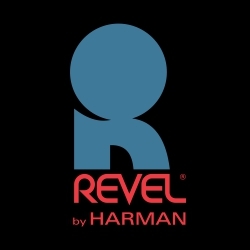Bless Theta’s sense of humour. By naming one player ‘Miles’ and another ‘Pearl’, the company showed how to appeal to a wide cross-section of customers and music tastes. The former could have been named for, say, Miles Davis or Buddy Miles or the Who, while the latter could be in honour of Pearl Bailey, Pearl Jam, Minnie Pearl, Janis Joplin or Tom Rapp. DaViD? Try Hal David, D W Griffith, David Lee Roth. Now we have Carmen, a DVD transport-only, which could be so-named for the opera, for Carmen McRae, or – and I’d like to think that this is the case given that it is a device purchased for visual as well as audible prowess – Carmen Miranda. This flexible nomenclature is no conceit: the Carmen is one of the most adaptable DVD devices I’ve ever encountered.
What’s debatable is whether or not it obviates the DaViD player. Given that just about every worthy A/V processor on the market has an array of on-board D/A converters, transports seem a more sensible way of distributing one’s funds; the savings in this case amount to over a grand: £3299 versus the DaViD’s £4650. And, despite the DaViD’s superior power supplies and chunkier case, Carmen boasts being “the next evolution of DVD transports by Theta. Using third generation DVD technology and new audio and video circuits developed in the last few months…” Hence, the video section could be superior to the DaViD’s, so a side-by-side demo is advised.
Carmen has allowed for every implementation of the 5in disc bar DVD-A and SACD, including 96kHz 24-bit compatibility, while good old CD is not neglected as this uses Pioneer’s dual-laser transport as its heart. It is therefore as careful of CD playback as it is of DVD. Moreover, it employs separate low-jitter crystal oscillators for independently processed video and audio. Taking this further, the audio and video circuits are completely separated to keep video noise away from the audio circuits and audio noise away from the video circuits.
Carmen uses fourteen highly filtered and regulated power supplies, comprised of multiple transformers for absolute isolation between circuits, and each supply and circuit features integral RF suppression for greater reduction of interference. The drive mechanism’s twin laser diodes are specified as 650nm for DVD and 780nm for CD, CD-R, CD-RW and VCD; the player had no problems with any of the CD-Rs or CD-RWs I tried, but – as we are continually advised by Barry Fox – don’t be too complacent, as writeable discs are hardly consistent. Special low-jitter digital servo circuits control the motor speed, laser tracking and focus, while other dedicated circuits use “sophisticated parametric statistical analysis” to correct errors on less than pristine discs bearing the ravages of fingerprints, dust and other ill-handling.
There’s much to remind you that this is based on a Pioneer transport; I discovered it when I used the Carmen’s nasty, crowded, non-illuminated, re-badged Pioneer remote and my DV-414 prang to life. Another ill-advised economy is that Theta, while adding a lavish metal front piece to the tray, stopped short of replacing the utterly cheesy plastic tray with a metal one, and failed to improve its operation. The tray action, without question, the noisiest, roughest-sounding I’ve come across, worse even than the £179 Wharfedale machine and my two-year-old Pioneer DV-414 (under $200 Stateside). For £3299, this thing should operate like a Leica. It’s enough to detract from the joys of ownership, like having a Ferrari with an incurable gearshift glitch. Shame on you, Theta.
As one who’s not too fussed about the graphic user displays – I remember MS-DOS, so anything else is high art – I won’t carp about the Carmen’s. Basically, it’s your standard fare with nested menus. In conjunction with the remote, you can deal with every single standard command known to DVD bar zoom facility. The minimalist front panel includes Stand-by, Display Dimmer, Stop, Play, Pause, Forward/Reverse Track, Low/High Speed Scan and Tray Open/Close. It’s clean and very Theta-ish, with a lucid display and a misleading air of opulence – the latter dispelled as soon as that tray opens. You sit there wondering how much they pay the guy who has the job of pouring sand onto the tray’s runners.
Carmen was slotted into two systems, both auditioned through five small Martin-Logans and a REL Strata III and viewed through a 29-in Panasonic 4:3 monitor. The first was the Lexicon MC-1 through Acurus and Marantz amplifiers, the second with the Musical Fidelity HTP processor and HT600 5-channel amplifier. Software ranged from a slew of new DTS-plus-Dolby-Digital-5.1-on-the-same-disc titles including Twister and the first three Lethal Weapon movies, separate DTS and Dolby Digital versions of Saving Private Ryan, and Dolby-only titles including Galaxy Quest, assorted Bond films, and some remastered Elvis movies. Music-only material, in addition to straight CDs, included a handful of Classic 96/24 discs.
However tempting it was to concentrate on the DVDs, I was continually drawn back to the sublime CD performance. And to call the Carmen’s playback ‘sublime’ when, in my other room, I was playing host to a Krell KPS25cs is high praise indeed; the latter costs seven-and-a-half times as much (although it does also feature a pre-amp and DAC). Which is why I fed the Carmen into the Krell for CD-to-CD comparisons. If you accept that the Krell is the – no, make that one of the indisputable kings of CD playback, then it’s understandable that it should outperform the more modest Carmen. Which it did in most parameters. But the Carmen did not act like 1/7th of a Krell. It didn’t quite match the Krell’s bass extension, nor was its top as sweet and smooth, but it sounded just as big and open, and had almost as much in the way of fine detail.
Clearly, the Carmen can justify its existence as a CD player alone, with the DVD aspects a mere bonus. It deals beautifully with bombastic works, like the soundtracks to Glory and Lawrence Of Arabia, but then these have cinematic origins, so maybe they loaded the dice in the Theta’s favour? More interesting – because it is the antithesis of cinema sound – was the finesse demonstrated with a cappella recordings and female vocals. For the latter, I played the Judds’ marvellous take on ‘Don’t Be Cruel’, and Carmen preserved the liquid country warbling while conveying the bassist’s snap with cut-glass precision. When it came to the Persuasions, Carmen excelled at providing each voice with a clearly-defined space; better still, it juggled the deepest vocals with the high harmonies to blended perfection.
Another aspect which impressed me (because it’s a pet passion) was the stage depth, categorically as good as any I’ve heard from a non-analogue source. I’d wired up some LS3/5As for an upcoming project, and the Carmen exploited their quasi-point source behaviour by making the sound appear to emanate from way behind. This could be just the ticket if you want dipole sound but don’t have the space for panels.
But it was as a DVD provider that allowed Carmen to come into her own. On the video side, it produced, beyond ANY doubt, the best images I’ve seen in my home, and that was via S-video. I can’t imagine what this must be like with the 4:2:2 option. Colours had a delicious vibrancy, especially free from blurring even during the Omega 13 sequences in Galaxy Quest, while the reproduction of flames was utterly convincing and devoid of any of the blocky effects which make you think you’re watching a pre-Open GL/3Dx game on a PC. But the pictures aren’t all…
Where Carmen really wees on the tree is with its resolution of surround sound – now even easier to A/B with both Dolby Digital 5.1 and DTS on the same discs. So Twister isn’t exactly the film to knock Citizen Kane out of the Top 10, but the surround sound effects are something to behold, especially the sequences in the middle of the tornado, to show what seamless surround with only five speakers can be. Given that I was auditioning the Carmen in late June, when the weather was thunderous, I had to keep checking to see if it was the disc or the real world making the rumblings. Moreover, this film in conjunction with Carmen, changed my attitude about subwoofers: I now realise that, even in small rooms with good-sized primary speakers, that 0.1 channel has its uses.
But vague thunder isn’t cohesive enough to impress you, eh? Then try the bit when they’re driving through the cornfields and the plants are whipping against the sides of the truck. Sit centrally and you’ll get it precisely where you’d expect it to be: travelling alongside you. And both versions of Saving Private Ryan, particularly the underwater sequences at the film’s beginning, let you hear why the Carmen is a challenger for the world’s best, and hear conclusively why DTS betters Dolby. The feeling of total immersion will elicit frissons of claustrophobia – just as it should.
Evil tray aside, Theta’s Carmen is the most enjoyable DVD front-end I’ve used to date. The visuals are impossible to fault on a normal CRT, while the sound is so good that it shows what processors can and cannot do. But I tell you this: were I to buy one, I’d be pestering a skilled metal-worker to replace the tray for me. Thus, I hope that 100 years from now, one of my successors puts Carmen’s tray in the All-Time Golden Turkeys of Y2.1K.
SIDEBAR: OUTPUTS GALORE
Where the Carmen shines is in its connectivity. Now, before you get all xenophobic, (1) Theta is American, (2) only Europe gives a toss about SCART, and (3) it’s not Theta’s fault that the scum in Brussels are denying us HDTV. Conversely, there are plenty of videophiles here who own projectors which will benefit from the advanced outputs, and the unit’s region-free behaviour suggests a global approach rather than a specifically American one. Moreover, I have used UK-made processors which lack SCART, so it seems like the industry overall has opted for individualism. Hell, I recently played with a processor which only used BNC connectors and one RCA. Duh.
As shipped, Carmen boasts two S-video outputs, two composite outputs (RCA & BNC) and component video out (Y, Cr, Cb on BNC); the latter is selected on the back via a tiny toggle. Next to this array is a selection of audio outputs including PCM Only (RCA) and PCM/DTS/Dolby 5.1 through RCA, BNC or AES/EBU XLR-balanced connecter. Optical output is an available option in both AT&T and Laser Linque Theta’s (Single Mode), while the really serious video hobbyists will be pleased to know that Theta can fit 4:2:2 Digital Video Out and/or Progressive Scan (480p) in both RGB and Component Video with sync outputs for Sync on Green, Horizontal, Vertical and Composite. These outputs occupy a row above the standard outputs, blanked off on the standard model. Measuring 19x3x15 1/5in (WDH), the Carmen further impresses upon its owner the seriousness of its purpose in through a weight of 23 lbs.
Note that the options are factory-fitted-only. With the 4:2:2 option, the video remains in the digital domain from the disc through to the line multiplier; Digital Video out is available as an option for Carmen, DaViD and Voyager). This option requires a projector or line processor with digital video inputs, e.g. the Dwin Transcanner. With the Progressive Video Output option, Theta adds a dedicated transformer and 4 additional power supplies.
©Ken Kessler 2000






















